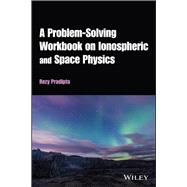Enables students to understand and master basic and advanced concepts of space, atmosphere, and ionospheric physics
A Problem-Solving Workbook on Ionospheric and Space Physics is a unique textbook that contains a set of problems and exercises accompanied with complete solutions that explore and elucidate the most relevant concepts in ionospheric and space physics. The author has chosen problems that are interesting topic-wise, challenging, and that exemplify the physical and mathematical reasoning in ionospheric and space physics.
Specifically, the text conveys core concepts of ionospheric and space physics using a problem-based approach. Each problem elucidates prototypical aspects that readers can easily generalize. Each problem also consists of multi-part questions to facilitate step-by-step understanding. A short introduction to each problem defines the theme and provides context to the readers.
In A Problem-Solving Workbook on Ionospheric and Space Physics, readers can expect to learn about:
- Remote sensing of ionospheric plasmas from the ground, ionospheric slab thickness of a transparent layer, reflectometry, and doppler effects in reflection/refraction of electromagnetic waves
- Chapman theory of ionospheric layer formation, magnetic fields generated by the equatorial electrojet current, and fundamentals of GPS total electron content (TEC) measurements
- Barker codes and radar pulse compression, abel inversion of ionosonde trace data, and phase and group velocities of acoustic-gravity waves
- The use of deconvolution in radar scans, sporadic-E layers and Kelvin-Helmholtz instability due to wind shear, and Brunt-Vaisala frequency
Thanks to the careful selection of included material, A Problem-Solving Workbook on Ionospheric and Space Physics serves as a gateway for advanced students and early-career researchers towards actual research-level problems in the field. As the problems are textbook-agnostic, students can easily self-study and learn about the subject outside the classroom.









